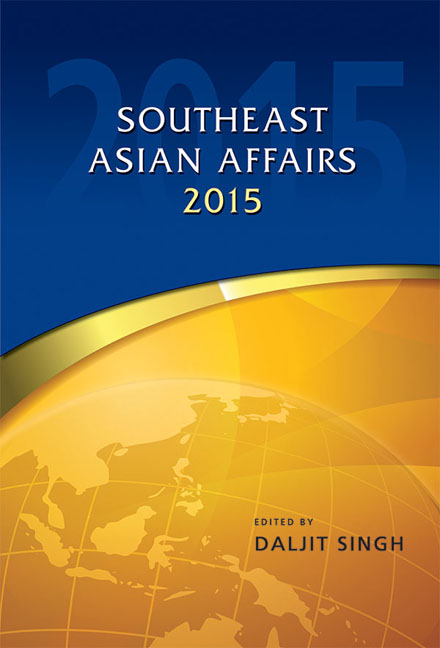Vietnam in 2014: Crisis with China Makes Headlines
from VIETNAM
Published online by Cambridge University Press: 19 May 2017
Summary
Introduction
The defining event of 2014 was the crisis between Vietnam and China relating to the activities of a Chinese drilling rig in areas to the west of the Paracel archipelago. The crisis and related tension lasted from early May to mid-July. Although differences relating to disputes in the South China Sea do cause periodic tension between the two countries, a crisis of this scale has not occurred since the 1990s and no previous crisis has such ramifications within Vietnam, both in terms of popular protests against China and through riots targeting foreign companies in May. This overview of Vietnam in 2014 will examine these keys developments in the context of Vietnam's domestic developments as well as its foreign relations.
Crisis with China and Its Repercussions
The relationship with China continues to be of paramount importance to Vietnam in terms of both a multifaceted collaboration in various fields and the geo-strategic challenge posed by China, in particular regarding the South China Sea. The disputes with China in the South China Sea, that is, overlapping sovereignty claims to the Paracel and Spratly archipelagos as well as to maritime areas between the Vietnamese coast and the two archipelagos within the “ninedash line” claimed by China, continued to pose a major challenge in bilateral relations in 2014. This was highlighted by the crisis and tensions caused by the dispatch of drilling rig HD-981 to areas west of the Paracel archipelago by the China National Offshore Oil Corporation on 2 May. The crisis and related tension lasted until mid-July when China announced the withdrawal of the drilling rig. Prior to the crisis, there had been no tension between Vietnam and China since mid-2013. The period from mid-2013 to April 2014 was characterized by deepened bilateral cooperation and by a seemingly successful bilateral dispute management approach relating to the disputes in the South China Sea.
Vietnam's and China's Viewpoints and Actions during the Crisis
Vietnam denounced the stationing of the drilling rig as illegal and demanded its withdrawal. In addition Vietnam claimed that the rig's area of operation was within Vietnam's exclusive economic zone and continental shelf as measured from its coastline; it also reasserted its claim of sovereignty to both the Paracel and Spratly archipelagos. Vietnam further accused China of using force against its ships in the waters near the Paracel archipelago and of arresting Vietnamese fishermen.
- Type
- Chapter
- Information
- Southeast Asian Affairs 2015 , pp. 387 - 401Publisher: ISEAS–Yusof Ishak InstitutePrint publication year: 2015

